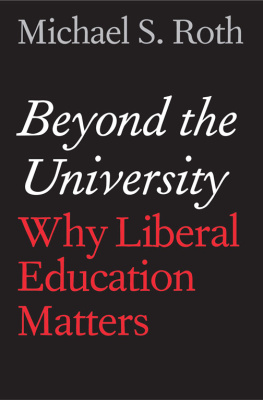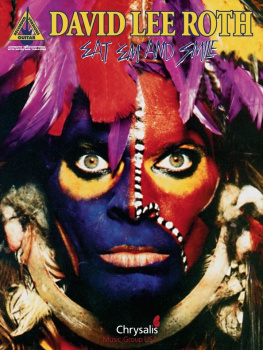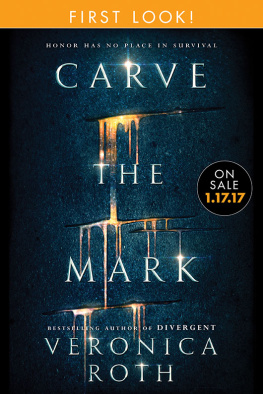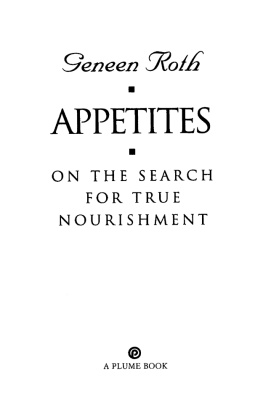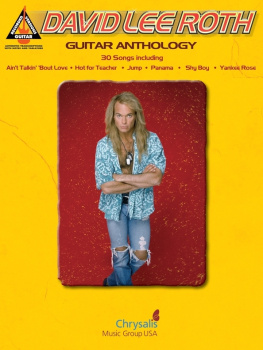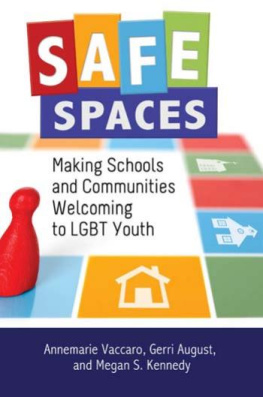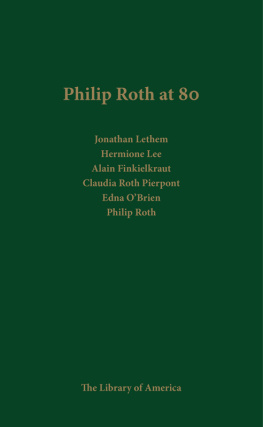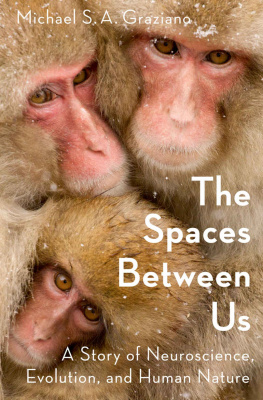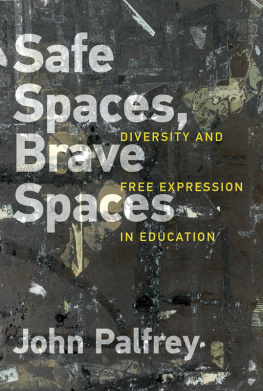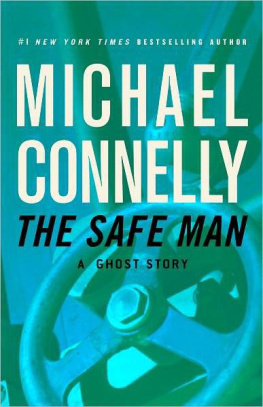Michael S. Roth - Safe Enough Spaces
Here you can read online Michael S. Roth - Safe Enough Spaces full text of the book (entire story) in english for free. Download pdf and epub, get meaning, cover and reviews about this ebook. year: 2019, publisher: Yale University Press, genre: Politics. Description of the work, (preface) as well as reviews are available. Best literature library LitArk.com created for fans of good reading and offers a wide selection of genres:
Romance novel
Science fiction
Adventure
Detective
Science
History
Home and family
Prose
Art
Politics
Computer
Non-fiction
Religion
Business
Children
Humor
Choose a favorite category and find really read worthwhile books. Enjoy immersion in the world of imagination, feel the emotions of the characters or learn something new for yourself, make an fascinating discovery.

- Book:Safe Enough Spaces
- Author:
- Publisher:Yale University Press
- Genre:
- Year:2019
- Rating:4 / 5
- Favourites:Add to favourites
- Your mark:
- 80
- 1
- 2
- 3
- 4
- 5
Safe Enough Spaces: summary, description and annotation
We offer to read an annotation, description, summary or preface (depends on what the author of the book "Safe Enough Spaces" wrote himself). If you haven't found the necessary information about the book — write in the comments, we will try to find it.
Safe Enough Spaces — read online for free the complete book (whole text) full work
Below is the text of the book, divided by pages. System saving the place of the last page read, allows you to conveniently read the book "Safe Enough Spaces" online for free, without having to search again every time where you left off. Put a bookmark, and you can go to the page where you finished reading at any time.
Font size:
Interval:
Bookmark:
Safe Enough Spaces
Also by Michael S. Roth
Beyond the University: Why Liberal Education Matters
Memory, Trauma, and History: Essays on Living with the Past
Irresistible Decay: Ruins Reclaimed, with Clare Lyons and Charles Merewether
Freud: Conflict and Culture, Essays on His Life, Work and Legacy, editor
The Ironists Cage: Trauma, Memory and the Construction of History
Disturbing Remains: Memory, History and Crisis in the Twentieth Century, coeditor with Charles G. Salas
Looking for Los Angeles: Architecture, Film, Photography and the Urban Landscape, coeditor with Charles G. Salas
History And: Histories Within the Human Sciences, coeditor with Ralph Cohen
Rediscovering History: Culture, Politics and the Psyche, editor
Knowing and History: Appropriations of Hegel in Twentieth-Century France
Psycho-Analysis as History: Negation and Freedom in Freud
A Pragmatists Approach to Inclusion,
Free Speech, and Political Correctness
on College Campuses
MICHAEL S. ROTH

Published with assistance from the foundation established in memory of Amasa Stone Mather of the Class of 1907, Yale College.
Copyright 2019 by Michael S. Roth.
All rights reserved.
This book may not be reproduced, in whole or in part, including illustrations, in any form (beyond that copying permitted by Sections 107 and 108 of the U.S. Copyright Law and except by reviewers for the public press), without written permission from the publishers.
Yale University Press books may be purchased in quantity for educational, business, or promotional use. For information, please e-mail (U.K. office).
Set in Minion type by Integrated Publishing Solutions.
Printed in the United States of America.
Library of Congress Control Number: 2019931177
ISBN 978-0-300-23485-5 (hardcover : alk. paper)
A catalogue record for this book is available from the British Library.
This paper meets the requirements of ANSI/NISO Z39.48-1992 (Permanence of Paper).
10 9 8 7 6 5 4 3 2 1
For Wesleyan University
Ive been teaching college students since 1983, first at Scripps College and then at the Claremont Graduate University, UCLA, the California College of the Arts, and, for the last decade or so, at Wesleyan University, where I myself was an undergrad in the mid-1970s. For almost twenty years, I have combined that teaching with administrative work, mostly as a college president. I have a Ph.D. in history but have never been very happy staying within a single department. As an undergraduate, I was able to create my own major (history of psychological theory), and at Scripps College I jumped at the opportunity to found a Humanities Institute and offer classes across a range of fields. I later had the good fortune to run the international scholars program at the Getty Research Institute, in which artists and scholars from different disciplines come together to work on projects related to a common theme. Intellectual diversity has inspired and sustained me, mostly because I have always been eager to learnand needed to learnfrom scholars whose preparation and interests are very different from my own.
Intellectual diversity, I have found, is most effective if it complements other modes of difference within an academic community. Racial, ethnic, religious, and economic diversities on campus increase the likelihood that students and teachers will hear different points of view, encounter a variety of experiences, and forge more inclusive projects as they connect campus learning to life beyond the university. Of course, the fact that one belongs to a specific demographic group doesnt necessarily mean one will have a particular point of view, and campuses can become balkanized into separate silos based on identity or politics. But bringing to a campus students from diverse backgrounds, with a variety of ideas, creates more possibilities for learning from people different from oneself.
As president of the university, I am often the one students turn to when they find unhappy differencessay, between their political or moral values and what they perceive to be the direction of the school. We find ways to discuss these conflicts, not usually with the expectation that we will land on consensus, but in order to acknowledge and clarify where we disagree and where we might continue to learn from each other (or work toward a common goal). At Wesleyan and at other universities, tensions on some issues dont typically derail finding common purpose on other ones. Faculty, staff, or students who might be quite sure of their antagonistic positions on an educational policy matter find ways to reason together to make progress on other issues. Of course, sometimes the tensions or the differences are too great and productive conversation breaks down. These days when that happens, especially when groups of students are involved, there is almost always someone there with a phone to video the mess. But most of the time its not like that. Members of the campus community are used to intellectual conflictinside and outside the classroomand this often means leaving their comfort zones, hearing perspectives they didnt expect to hear. And most campuses are safe enough for that to happen.
The phrase safe enough recalls the good enough parenting concept of the British psychoanalyst D. W. Winnicott. A good-enough parent enables a child to flourish, whereas a parent aiming to be perfect (to orchestrate an ideal childhood) winds up creating immense difficulties for a youngster needing to experience failure in order to grow. As a teacher and university president, I find that schools that promote a basic sense of inclusion and respect enable students to flourishto be open to ideas and perspectives so that the differences they encounter are educative. That basic sense is feeling safe enough.

A number of the arguments here were developed in opinion pieces, blog posts, and book reviews that Ive written over the past few years. I am grateful to the Washington Post, the New York Times, the Wall Street Journal, Inside Higher Education, and the Chronicle of Higher Education for the opportunities to publish in their pages. Peter Dougherty, an editor at Princeton University Press, discussed the germ of the idea for this book, and Jennifer Banks and her team at Yale University Press, especially the manuscript editor, Julie Carlson, have been thoughtful and attentive in seeing the project through. With respect to preparing the manuscript of this book, my former student, longtime colleague, and old friend Charles Salas has helpfully provided notes on what Ive written (and, sometimes, what I should have written). I am grateful to them all.
Wesleyan University is known for its engaged student body, its emphasis on interdisciplinarity and critical thinking, and its dedication to providing an education in the liberal arts that is characterized by boldness, rigor, and practical idealism. As an undergraduate there in the 1970s, I critically engaged with its policies and administration even as I was transformed by its enlivening faculty and campus culture. Now during my tenure as president, the university community has been generous with its (varied and ample!) criticism of my views. Exploring the ramifications of pragmatic liberal education in particular, and the issues facing higher education in general, is at once my responsibility as a college president, and a passionate research interest. In this, my engagement with the extraordinary students, faculty, staff, and alumni of Wesleyan University has been and continues to be essential to my thinking and my writing. I dedicate this book to them.
Next pageFont size:
Interval:
Bookmark:
Similar books «Safe Enough Spaces»
Look at similar books to Safe Enough Spaces. We have selected literature similar in name and meaning in the hope of providing readers with more options to find new, interesting, not yet read works.
Discussion, reviews of the book Safe Enough Spaces and just readers' own opinions. Leave your comments, write what you think about the work, its meaning or the main characters. Specify what exactly you liked and what you didn't like, and why you think so.

